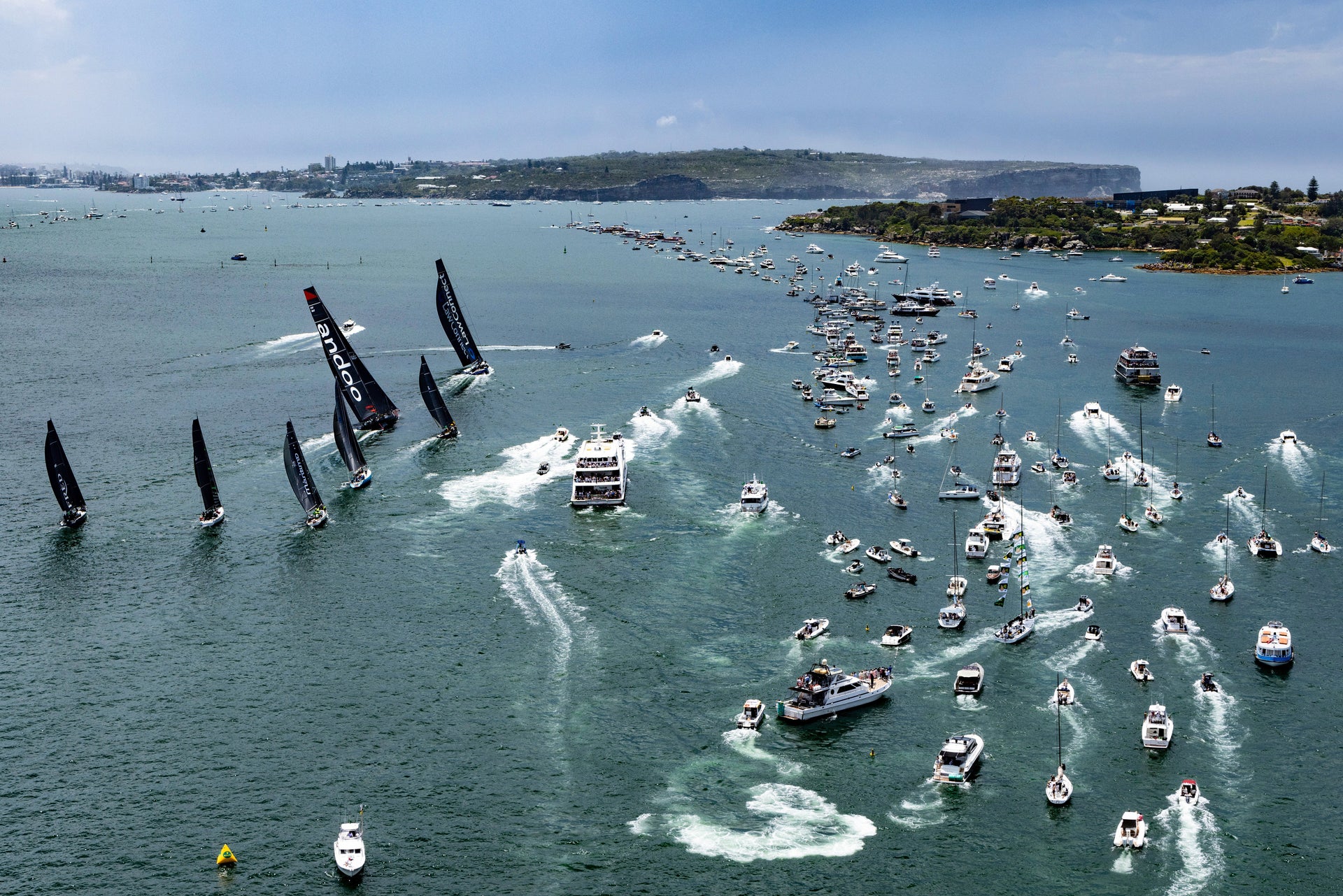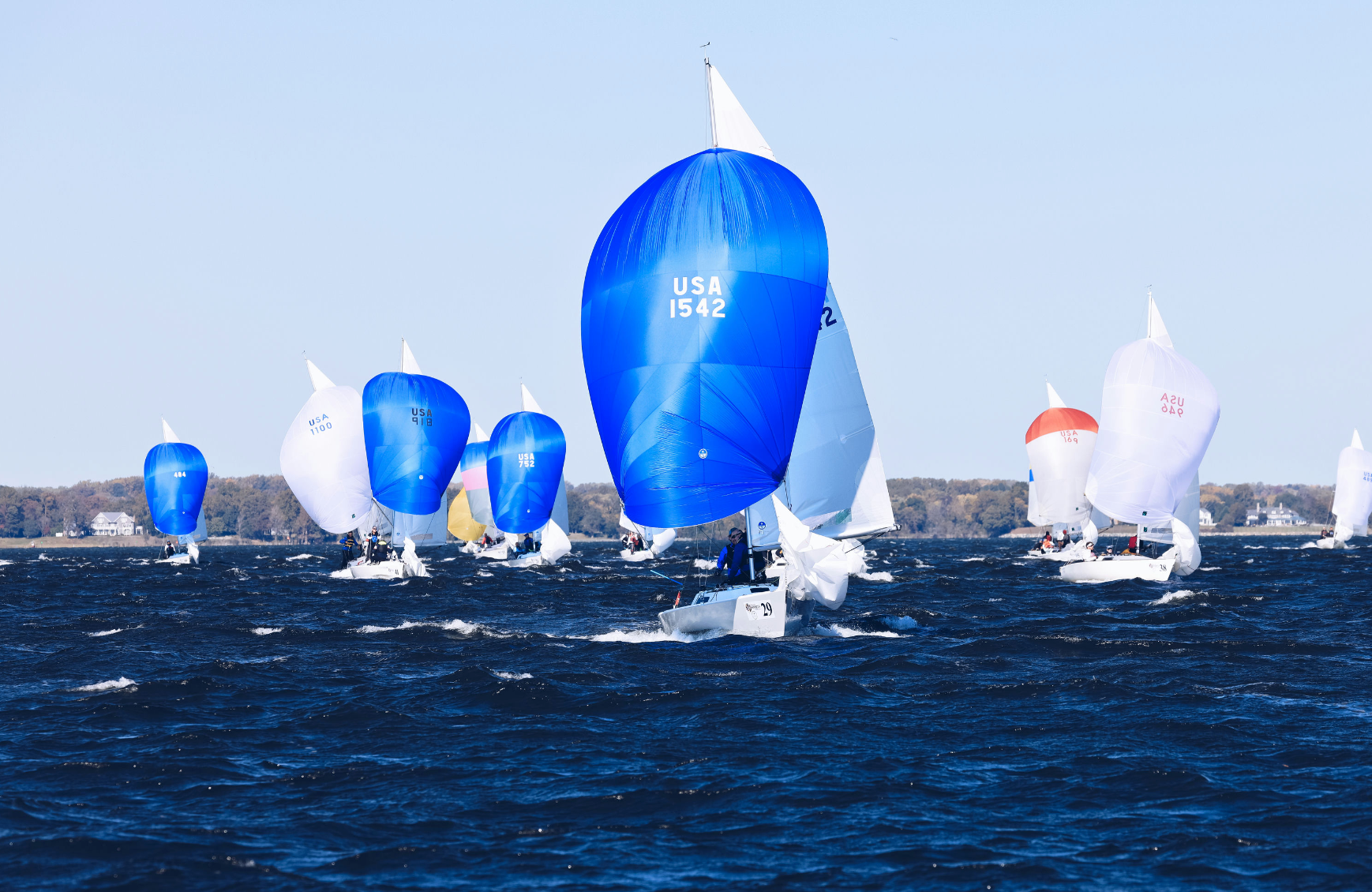FLYING SCOT MIDWINTERS - WINNING IN THE CHALLENGERS DIVISION
FLYING SCOT MIDWINTERS
Winning In The Challengers Division

When Chuck Tanner found himself without a skipper for the Flying Scot Midwinters he connected with local Fleet 36 captain Karen Jones and began training with a modest goal of “top 5 finishes” and having fun on their home waters in Sarasota Bay. Now, after winning 6 of 8 races and dominating the fleet with boat speed and solid teamwork, Karen and Chuck share some of their secrets that made them the 2019 Midwinter Challenger Division Champions!
Karen and Chuck, first off congratulations on your performance at the Midwinters in the Challenger Division. You had an incredibly consistent performance throughout the week through a very wide range of conditions. What were the keys to being able to adapt to the different conditions and be so successful in all of them?
Thanks! First off the North Sails RHC main, Snug Rig Jib and BR-1 spinnaker were fast! They had been used a bit but they really hold their original designed shape (not stretched and worn) really well and these designs really set up well for our team weight (low 300#s) for the range over three gorgeous days. In addition to knowing we had the fastest sails, we also had the advantage of familiar waters and winds. In the light stuff Karen kept the boat punching through chop left over from earlier higher winds and from motor boats. In the races where we were overpowered we also kept the boat moving through the water using vang and cunningham to keep us more than competitive with the heavier teams. If our crew weight was in the low 400#s we might ask Zeke about using the standard AP Mainsail, but the newer Norths really have a wide wind range for more people.
Clearly you were going FAST. What tips would you give to fellow class members that can help them get prepared to have top notch boat speed throughout a wide range of conditions?
We all say that old Scots stay competitive with new Scots as long as you have a decent suit of sails. In my experience, the Norths have always had a longer life than most other makers. Jibs and spinnakers take a rougher beating so you might get a year less out of them than you do the main. Along with recent sails, I think our boat set-up was similar to what the current competitive boats have, and the lines and blocks were all in good repair. You can’t fight your boat, sails, and gear and at the same time expect to stay competitive.
We all say that old Scots stay competitive with new Scots as long as you have a decent suit of sails. In my experience, the Norths have always had a longer life than most other makers.

What did the team focus on as far as pre-race “homework?” Did you have a routine before every race?
We were lucky that David Ames (ed: David, with PJ Buhler were the Championship Division runner-ups with their brand new North Sails!) took time to help us all over several weekends. He wants us to develop the habit of checking weather reports beforehand, watching the wind as we sail to the course area, note the lifts and headers, and possible persistent direction changes, on both tacks. Where are the areas of pressure? How do they move across the course? He wants us to check for which end is favored, at both ends, and perhaps teaming with a second boat if possible. He wants us to get a line sight when that pin finally gets established. All these small things added up to helping us keep our focus each race.
What was your communication on the boat like? How did you divvy up the roles in terms of boat speed and tactics/strategy?
Because of the close proximity of so many boats I recall Karen asked me not to chatter too much in those last few minutes before he start! The result was mostly fine starts that gave us the freedom to hold our lane and go pretty fast. We were able to shed some of the boats quickly, though in the Champ Fleet the luxury of dusting the boats around us is just not a possibility. Along with nice starts, Karen concentrated on speed and height very successfully, and that allowed me to focus on tactics and positioning and choose when we would tack and gybe and where to go! Also, we worked hard on sail trim and mainsheet and vang adjustment was constant and sail trim was a joint effort.
The Challenger fleet has the advantage of being able to watch the Championship fleet start first. Did you use the Championship fleet as a tell tale for what might happen in your races?
Watching the Champ Fleet on the starting line, on the weather leg, and downwind is invaluable and is also one of the most enjoyable things about the big regattas. It is a great tip for Challenger teams to use to improve their performance and results. It has a huge effect on our plans and choices throughout each race.

What was your general strategy on the starting line?
Our plan was to set up so that we had some room ahead and to port to accelerate into through the seconds before and after the gun. Karen’s success here really helped us to have freedom and choices up the first weather leg.
We noted how the top of the Champ Fleet can, in light air, induce heel to leeward and really keep charging downwind. … this downwind “gear changing” may be the most difficult part of Scot racing to master.
We did a lot of sailing with varying wind velocities (lots of puffs and lulls). How did you change gears with sail trim, center board trim (downwind), and body positioning throughout the changing velocities?
We were always quick to ease vang and sheets, always looking for the drop in pressure. Karen was always quick to bear off and ease slightly for chop, and keep the boat feeling like it was moving freely. Karen frequently had me move into the boat to induce heel when pressure dropped. For chop I would slide aft to ‘butts together’. Downwind the board was in skeg mode for tracking over a wide range. When the wind came forward, we would lower the board to 1/3rd, for reaching and downwind we heeled the boat to weather whenever possible. We noted how the top of the Champ Fleet can, in light air, induce heel to leeward and really keep charging downwind. From our perspective, this downwind “gear changing” may be the most difficult part of Scot racing to master.
Next year you’ll have to be in the Championship Division! How will you approach the regatta differently?
The Championship Fleet is a much more intense world. It is broken into three groups – good, better, best. We would have a strong learning curve within the ‘good’ group. It takes a lot to survive the starting line. Two recent Challenger champs, Jim Leggette and Bill Vogler, preferred to stay in Challenger for 2019, perhaps for the safety and fun factor!
Any last tips for the class on how to win a regatta?
Karen is captain of Scot Fleet 36 which is very active and the fleet sails at a pretty high skill level so my first suggestion is to get on the water with your local group and sail! Next, if you have the chance to attend a Midwinters or North Americans, you should do it. Between the racing and the tips you will get from the top sailors in the class you will become a better sailor. When I lost my crew job with Ron Pletsch I didn’t know if I’d get to race. When Karen and I teamed up, our goal was to shoot for individual top-five race finishes. We had a lot of good surprises. That happened unexpectedly to local members in 2015 also, and it can happen to everyone.
Get on the water with your local group. If you have the chance to attend a Midwinters or North Americans, you should do it. You will become a better sailor.


























